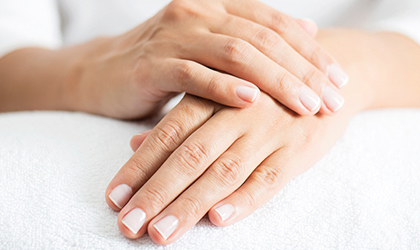
Essential oils or aromatic oils have been used by many cultures for many centuries. They are naturally occurring, aromatic compounds with a volatile nature. Derived from the stems, roots, seeds, bark, flowers and other plant parts - they all have a personality of their own. The essential oils are primarily there to protect plants from predators and environmental threats. Lucky for us however, that we have developed procedures to extract these precious oils, highly concentrate them and benefit from their properties. Many aromatherapy factions exist today, perhaps you use essential oils in one of the following ways?...
-
Skin care
-
Household hygiene
-
Personal hygiene
-
Medicine
-
Wellbeing
-
Holistic healing
Did you know?
The provenance of distillation is believed to have originated in Persia – modern day Iran. The chemistry they used enabled them to extract essence from rose petals, which created the famous rose water that they are renowned for today.
So how do we extract these essential oils from plants?
We have identified three main extraction processes, all of which are still used today and applied depending on the type of plant material.
Expression
If you have a penchant for gin and tonic with a twist of lemon then the likelihood is that you’ve done this one at home! Expression is the easiest and oldest form of extraction. It simply involves squeezing or pressing the plant component to release the oils. It is commonly practiced in citrus oil extraction where the oils are found in the skin.
Steam distillation
We are very familiar with this method of extraction, as it is used in the majority of our range of aromatherapy oils. The Persians discovered that this simple technique can be achieved by using water vessels in which to heat and collect and the magic ingredients; herbs, roots, seeds and barks. The water and plant compound are heated to break down the raw material and release the oils. Aromatic vapour is created and condensed to separate the oil from the water. With steam distillation many different expressions of scent can be achieved, which is perhaps why it is the most popular method of extraction.
Solvent extraction
Some plant compounds are too delicate to be heated in a distillation process, think of jasmine for example. These fragile blooms are instead steeped in a solvent such as alcohol which encourages the valuable oils from the petals. The solvent is then removed and what remains is a substance called absolute.
How can I use essential oils?
Just like us, aromatherapy oils have a unique personality of their own. They can be used individually or layered in a blend. They can be customised based on the season, our mood, the occasion and our health. However, these plant-based gems are used they have the ability to empower you to take control of that bad day, or mitigate that cooking smell, or appease that itchy insect bite. We hope this booklet will inspire you to find a love or nurture an existing one for these amazing essences of life.
There are four main applications for essential oils, some if not all, will be familiar to you, these are:
Diffusion
Diffusers are devices which are filled with water with a few drops of essential oil added. When powered they disperse an aromatic vapour which will scent the air. Heated oil burners require little or no water, just the essential oil in a vessel above a lit tea light. The principle is the same, the essence is released into the air. Many oils can be used in this way, however, fruit-based oils, such as wild orange, are sticky and may be troublesome to clean from the diffuser or burner.
Inhalation
Do you recall the pungent smelling rub your parents put onto your chest as a child when you suffered with a cold? Well this famous seasonal medicine contains aromatic oil of camphor, and eucalyptus oil, amongst other plant oils and ingredients. It’s these aromas that we associate with the airway clearing properties of the ointment. Inhalations don’t have to be complicated, a few drops of essential oils into a bowl of steamy warm water or in the bath and inhale the fragrant mist to feel the effects of the oil.
Massage
A luxurious way to enjoy essential oils and one you’d probably like to indulge in more often! Well if you ever succeed in this treat then choosing an aromatherapy massage will only heighten the experience. Essential oils are blended with a carrier oil, such as grapeseed oil, and is worked into the skin in a variety of movements, all designed to relax, restore and revitalise your body and senses. Blending with a carrier oil is said to encourage absorption and penetrate right into tense or over worked areas.
Topical
There are very few oils which are recommended for topical application in their concentrated, straight from the bottle state. Two such oils are Tea Tree and Lavender. Similarly, there are oils which should never be applied directly onto the skin. It is always best to read the guidance on the label if you are in any doubt. Typical applications for Tea Tree and Lavender oil are for soothing irritation from insect bites or minor grazes and burns, or the odd spot.
Did you know?
The powerful properties of natural essential oils are well documented and have been commonplace as far back as 2697 to 2597 BC, when the Yellow Emperor of China, Huang Ti wrote about their use in medicine, guidelines which are still in practice in the East today.
You Might Also Like

Keri
Keri Filtness has worked in the Nutrition Industry for 19 years. She is regularly called upon for her professional comments on health and nutrition related news. Her opinions have been featured by BBC3, Prima, Vitality, The Mirror, Woman’s Own and Cycling Weekly, amongst others. She has also worked one to one with journalists, analysing their diets and health concerns and recommending changes and additions, where appropriate.
View More



